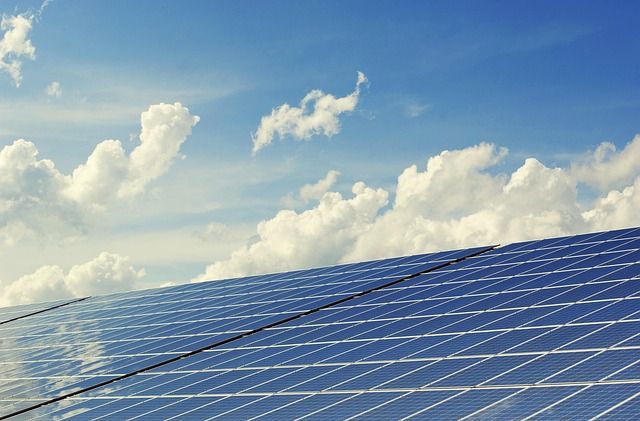Exploring Solar Panels: A Renewable Option for Homes and Businesses
Solar panels represent a significant advancement in renewable energy technology, offering a sustainable alternative to traditional power sources. Their adoption is growing globally as individuals and organizations seek ways to reduce their environmental impact and achieve greater energy independence. Understanding the fundamentals of solar energy, from its operational principles to installation considerations, is key for anyone contemplating this transition. This article delves into the various aspects of solar panels, providing insights into their functionality, benefits, and the economic factors involved in their integration into modern infrastructure.

The global energy landscape is undergoing a transformation, with a notable shift towards renewable sources. Among these, solar panels are emerging as a prominent solution for electricity generation in both residential and commercial settings. This increasing popularity is driven by a combination of environmental awareness, technological advancements, and economic incentives, positioning solar energy as a cornerstone of future power systems.
Why Solar Panels Are Expanding Worldwide
The expansion of solar panels globally is fueled by several factors. A primary driver is the growing awareness of climate change and the urgent need to reduce greenhouse gas emissions. Solar energy offers a clean power source, producing electricity without burning fossil fuels, thereby mitigating air pollution and carbon footprints. Additionally, advancements in photovoltaic technology have made solar panels more efficient and cost-effective than ever before. Government policies, including tax credits, rebates, and feed-in tariffs, have also played a crucial role in making solar installations more financially appealing for property owners. The desire for energy independence and resilience against fluctuating energy prices further contributes to this global trend, as solar power allows consumers to generate their own electricity.
How Solar Panels Work
Solar panels, or photovoltaic (PV) panels, convert sunlight into electricity using the photovoltaic effect. Each panel consists of multiple solar cells, typically made from silicon. When photons from sunlight strike these cells, they excite electrons, causing them to flow and generate an electric current. This direct current (DC) electricity is then sent to an inverter, which converts it into alternating current (AC) electricity, the type used in homes and businesses. The AC electricity can then power appliances, be stored in batteries, or be fed back into the electrical grid. The efficiency of this conversion process is a key performance indicator for solar panels, with continuous research aiming to improve it.
Factors to Consider Before Installation
Before installing a solar panel system, several factors warrant careful consideration to ensure optimal performance and return on investment. The amount of available sunlight is paramount; properties with unobstructed south-facing roofs (in the Northern Hemisphere) or north-facing roofs (in the Southern Hemisphere) typically receive the most sun exposure. Roof condition and structural integrity are also important, as panels have a significant lifespan and weight. The size of the system needed depends on current and projected electricity consumption. Local regulations, permitting requirements, and potential homeowners’ association rules can influence the installation process. Finally, understanding the various financing options, incentives, and net metering policies available in your area is crucial for making an informed decision.
Solar Panels vs. Conventional Power Sources
Comparing solar panels to conventional power sources, such as those relying on fossil fuels, highlights distinct advantages and disadvantages. Conventional power plants offer constant, on-demand electricity generation, but they contribute to air pollution, greenhouse gas emissions, and rely on finite resources. Solar panels, conversely, provide clean, renewable energy with no operational emissions, reducing environmental impact. However, solar power generation is intermittent, dependent on daylight and weather conditions, necessitating solutions like battery storage or grid tie-ins for consistent supply. While the upfront cost of solar installation can be higher, the long-term savings on electricity bills and potential for increased property value often offset this initial investment, making it a competitive option over the system’s lifespan.
Cost Considerations for Solar Panel Installation
The cost of installing solar panels can vary significantly based on several factors, including system size, panel efficiency, installation complexity, and regional labor rates. For a typical residential solar system, costs generally encompass the panels themselves, inverters, mounting hardware, wiring, and labor. Additional expenses might include battery storage systems for enhanced energy independence or specific upgrades to electrical infrastructure. While the initial investment can appear substantial, various incentives such as federal tax credits, state rebates, and local programs can help reduce the net cost. It is essential for consumers to research these opportunities and obtain multiple quotes from providers to understand the full financial scope.
| Product/Service | Provider | Cost Estimation (USD) |
|---|---|---|
| Residential Solar System | Local Solar Installer | $15,000 - $25,000 |
| Commercial Solar System | National Solar Provider | $50,000 - $200,000+ |
| Solar Battery Storage | Specialized Energy Company | $8,000 - $15,000 |
Prices, rates, or cost estimates mentioned in this article are based on the latest available information but may change over time. Independent research is advised before making financial decisions.
The widespread adoption of solar panels underscores a global commitment to sustainable energy practices. As technology continues to evolve and costs become more accessible, solar energy is poised to play an even more critical role in powering homes and businesses around the world. Understanding the mechanics, benefits, and economic considerations of solar power empowers individuals and organizations to make informed choices for a cleaner, more resilient energy future.




